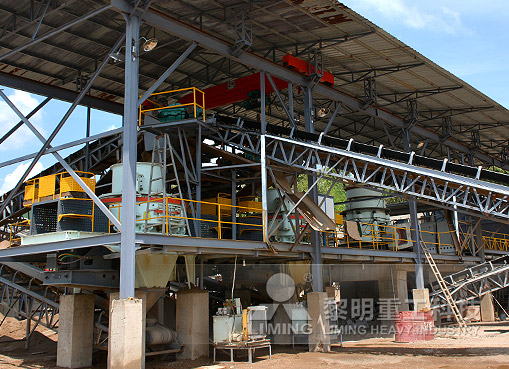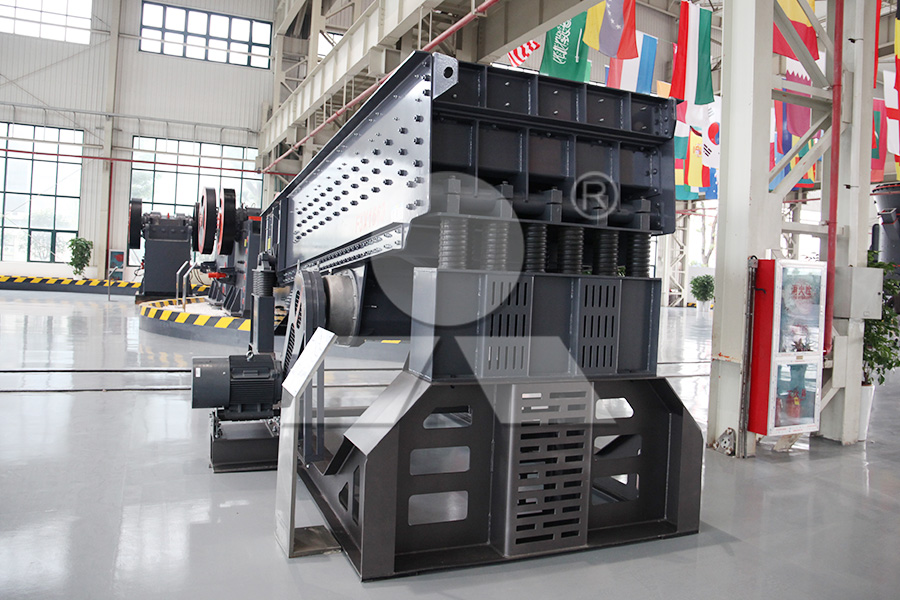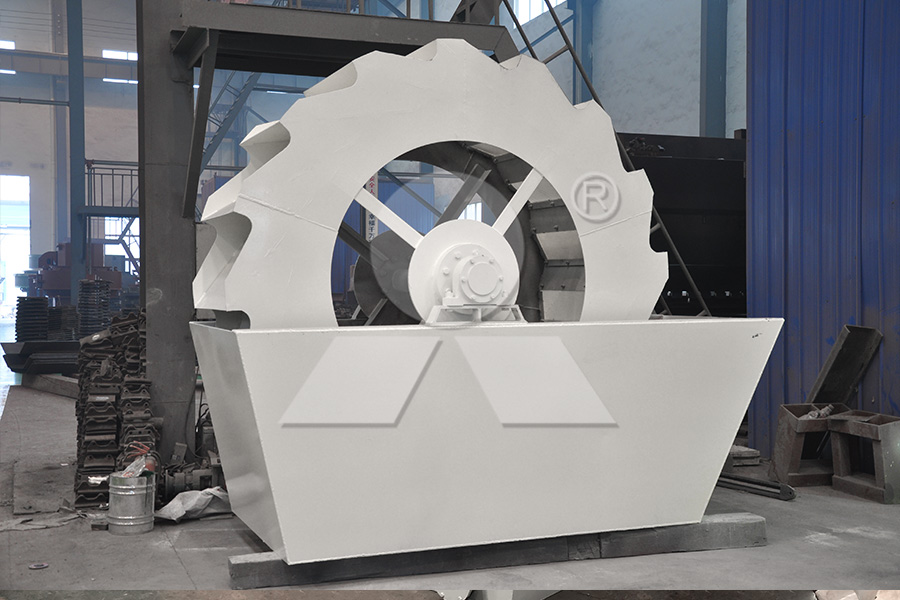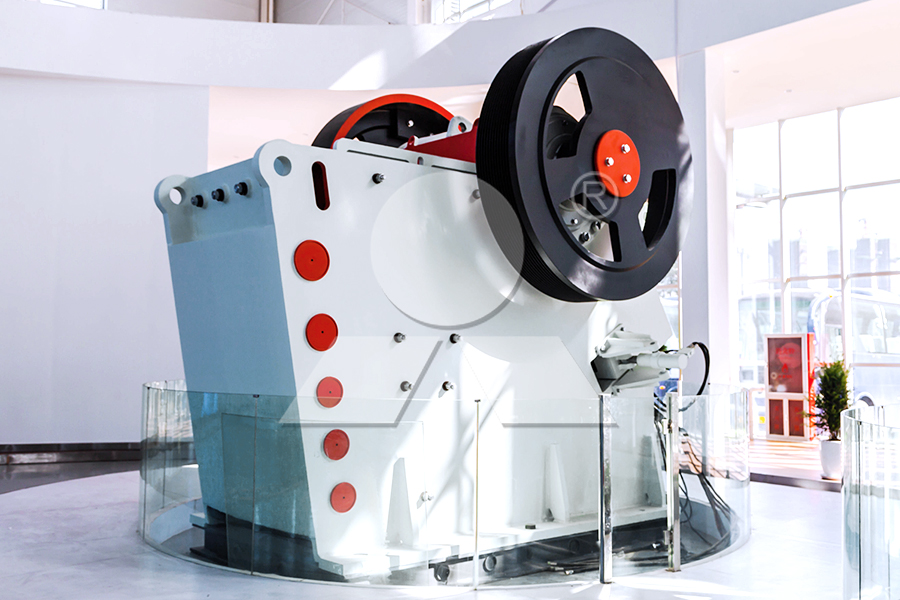

Dry production process of large-scale artificial sand production line After the raw materials are screened by the vibrating feeder screen and the screening machine to remove the dirt, they are generally crushed by coarse crushing and medium crushing be
Dry production process of large-scale artificial sand production line After the raw materials are screened by the vibrating feeder screen and the screening machine to remove the dirt, they are generally crushed by coarse crushing and medium crushing before inspection and screening. The ore is divided into three parts by screening: the coarser first-level ore that does not meet the product particle size requirements is returned to the medium crushing equipment for re-crushing. This part of the returned material forms a closed loop between the medium and fine crushing and screening; the medium-sized ore is directly used as the finished aggregate and enters the product warehouse or yard; the raw materials with a particle size less than a certain size enter the vertical shaping sand making machine for shaping and sand making. The stone powder produced by the sand making part is collected by the powder selection machine and the air dust removal equipment and enters the closed stone powder warehouse.
Click to consult to understand the advantages and disadvantages of the artificial sand process

Main advantages
(1) The finished aggregate and artificial sand have a low moisture content, generally not higher than 2%, and can be directly transported or used. It will not freeze when the temperature is below zero in winter, and can be produced continuously throughout the year.
(2) By adjusting the air volume and air pressure of the powder selector, the stone powder content in the finished sand can be controlled. Compared with the wet method, the sand production rate is high, and it can also directly meet the mandatory requirements of civil construction engineering standards and urban construction related standards. In addition, the strength of concrete made from this finished aggregate is relatively high.
(3) The fine stone powder collected as a by-product during the production process can be used as a roadbed cushion or raw material for cement unburned bricks. The resource utilization rate is high and zero emissions can basically be achieved.
(4) Since water is basically not used during the production process, water supply and drainage and sewage treatment equipment are reduced, and the system is relatively simple, so the investment is small, the land area is small, the number of operators and managers is small, the production capacity is large, and the production cost is also low.
(5) The processing process is short, the equipment is simple and easy to centrally control, and it is relatively easy to realize automated or unmanned production operation.
(6) By controlling the content of soil, weathered rock and organic matter in the mining stage, dust collectors are used for dust collection at all levels of crushing and screening. The finished sand and gravel aggregates can basically directly meet the requirements of water conservancy projects and urban construction standards without the need to add a powder selector.

Main Disadvantages
(1) It is sensitive to the content of impurities such as soil and organic matter in the raw materials. The content of impurities such as soil should be strictly controlled, otherwise it is very easy to cause blockage and overload of the dust collection system.
(2) There is a certain amount of stone powder residue on the surface of the product aggregate, the cleanliness is not high, and the appearance is poor.
(3) The stone crushing, screening and artificial sand making stages will generate a lot of dust, and the equipment sealing and dust removal requirements are strict. Dust is also easily generated at conveying equipment such as belt conveyors. According to the current environmental protection emission requirements, the main production equipment and conveying equipment are required to be arranged in a fully enclosed factory.
Previous: SMP Crusher
Next: SMP Crusher

Dry production process of large-scale artificial sand production line After the raw materials are screened by the vibrating feeder screen and the screening machine to remove the dirt, they are generally crushed by coarse crushing and medium crushing be
Dry production process of large-scale artificial sand production line After the raw materials are screened by the vibrating feeder screen and the screening machine to remove the dirt, they are generally crushed by coarse crushing and medium crushing before inspection and screening. The ore is divided into three parts by screening: the coarser first-level ore that does not meet the product particle size requirements is returned to the medium crushing equipment for re-crushing. This part of the returned material forms a closed loop between the medium and fine crushing and screening; the medium-sized ore is directly used as the finished aggregate and enters the product warehouse or yard; the raw materials with a particle size less than a certain size enter the vertical shaping sand making machine for shaping and sand making. The stone powder produced by the sand making part is collected by the powder selection machine and the air dust removal equipment and enters the closed stone powder warehouse.
Click to consult to understand the advantages and disadvantages of the artificial sand process

Main advantages
(1) The finished aggregate and artificial sand have a low moisture content, generally not higher than 2%, and can be directly transported or used. It will not freeze when the temperature is below zero in winter, and can be produced continuously throughout the year.
(2) By adjusting the air volume and air pressure of the powder selector, the stone powder content in the finished sand can be controlled. Compared with the wet method, the sand production rate is high, and it can also directly meet the mandatory requirements of civil construction engineering standards and urban construction related standards. In addition, the strength of concrete made from this finished aggregate is relatively high.
(3) The fine stone powder collected as a by-product during the production process can be used as a roadbed cushion or raw material for cement unburned bricks. The resource utilization rate is high and zero emissions can basically be achieved.
(4) Since water is basically not used during the production process, water supply and drainage and sewage treatment equipment are reduced, and the system is relatively simple, so the investment is small, the land area is small, the number of operators and managers is small, the production capacity is large, and the production cost is also low.
(5) The processing process is short, the equipment is simple and easy to centrally control, and it is relatively easy to realize automated or unmanned production operation.
(6) By controlling the content of soil, weathered rock and organic matter in the mining stage, dust collectors are used for dust collection at all levels of crushing and screening. The finished sand and gravel aggregates can basically directly meet the requirements of water conservancy projects and urban construction standards without the need to add a powder selector.

Main Disadvantages
(1) It is sensitive to the content of impurities such as soil and organic matter in the raw materials. The content of impurities such as soil should be strictly controlled, otherwise it is very easy to cause blockage and overload of the dust collection system.
(2) There is a certain amount of stone powder residue on the surface of the product aggregate, the cleanliness is not high, and the appearance is poor.
(3) The stone crushing, screening and artificial sand making stages will generate a lot of dust, and the equipment sealing and dust removal requirements are strict. Dust is also easily generated at conveying equipment such as belt conveyors. According to the current environmental protection emission requirements, the main production equipment and conveying equipment are required to be arranged in a fully enclosed factory.
Previous: SMP Crusher
Next: SMP Crusher
 What equipment does a large sand making machine production line have and how much does it cost?
What equipment does a large sand making machine production line have and how much does it cost? Zhejiang fine aggregate production line project 1500 tons per hour high-efficiency crushing solution
Zhejiang fine aggregate production line project 1500 tons per hour high-efficiency crushing solution Liming Heavy Industry VU Aggregate Optimization System: A Successful Example of Product Optimization
Liming Heavy Industry VU Aggregate Optimization System: A Successful Example of Product Optimization Liming Heavy Industry Mobile Crushing Station: The Optimization and Upgrading Road to Break Through Bottlenecks
Liming Heavy Industry Mobile Crushing Station: The Optimization and Upgrading Road to Break Through Bottlenecks Gravel production line: optimization and upgrading, new vitality
Gravel production line: optimization and upgrading, new vitality What equipment does a large sand making machine production line have and how much does it cost?
What equipment does a large sand making machine production line have and how much does it cost? Zhejiang fine aggregate production line project 1500 tons per hour high-efficiency crushing solution
Zhejiang fine aggregate production line project 1500 tons per hour high-efficiency crushing solution Liming Heavy Industry VU Aggregate Optimization System: A Successful Example of Product Optimization
Liming Heavy Industry VU Aggregate Optimization System: A Successful Example of Product Optimization Liming Heavy Industry Mobile Crushing Station: The Optimization and Upgrading Road to Break Through Bottlenecks
Liming Heavy Industry Mobile Crushing Station: The Optimization and Upgrading Road to Break Through Bottlenecks Gravel production line: optimization and upgrading, new vitality
Gravel production line: optimization and upgrading, new vitality